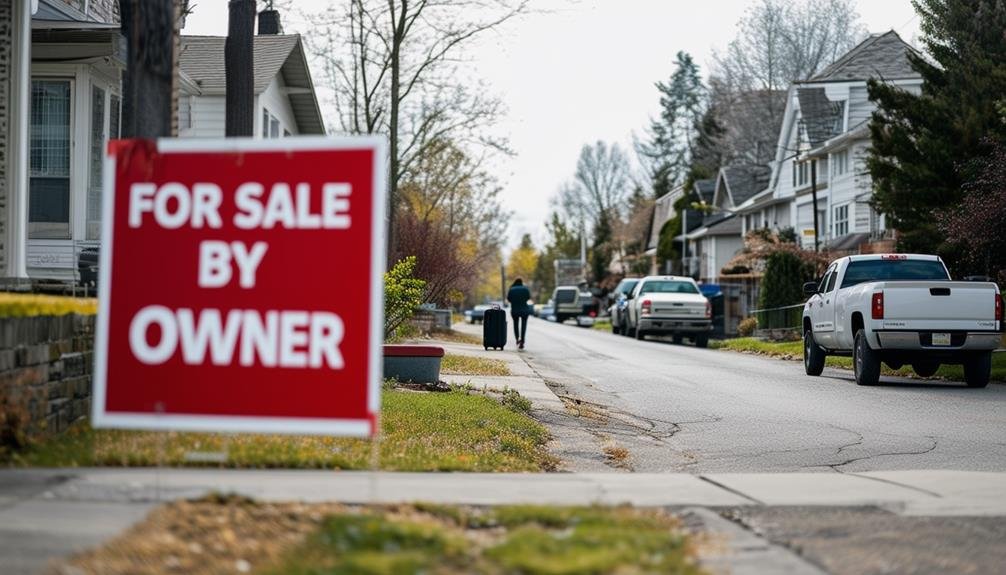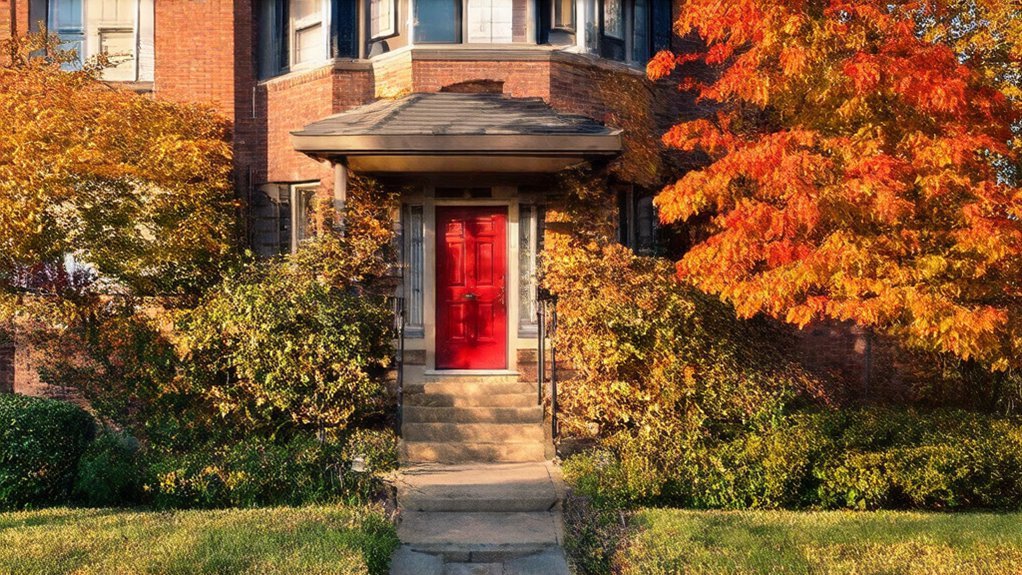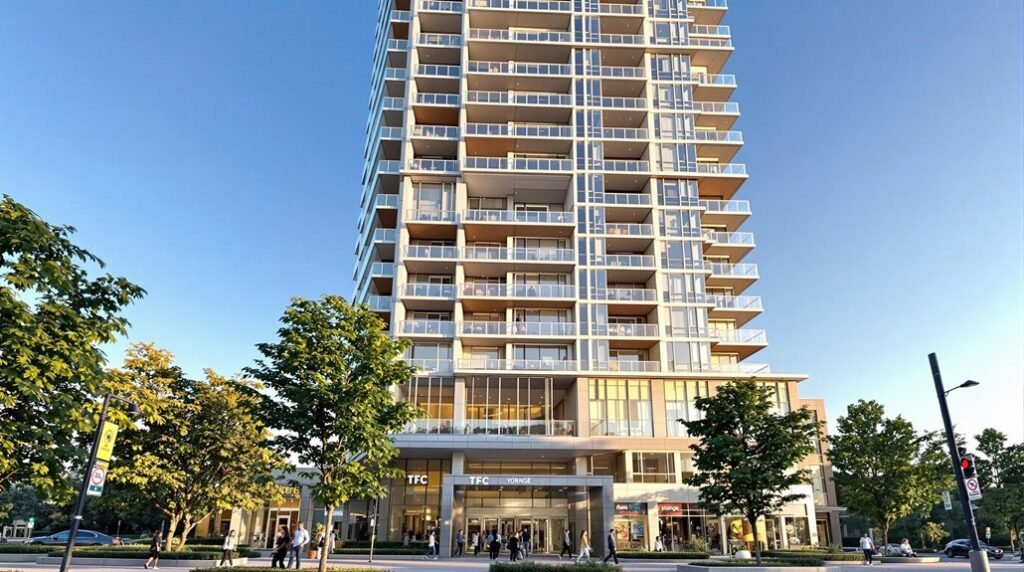As a Toronto first-time homebuyer, you’ll want to steer clear of properties with hidden flaws that could cost you thousands in repairs or jeopardize your family’s safety. When traversing the competitive real estate market, watch for red flags like cracks in walls, uneven floors, and off-center doors, which can indicate structural damage. Be wary of unusually low pricing, unclear property disclosures, and overly aggressive sales tactics. You should also investigate neighborhood dynamics, including high turnover rates, poor local schools, and environmental concerns. There’s more to uncover when it comes to making a smart and informed homebuying decision.
Foundation and Structural Issues
As a first-time homebuyer, you should be on the lookout for signs of foundation and structural issues, which can have a significant impact on the overall safety and longevity of the home. You’ll want to keep an eye out for red flags like cracks in walls, uneven floors, and off-center doors, as these can indicate significant structural problems that need immediate attention. If you notice any of these signs, don’t delay – foundation repairs can escalate quickly, often reaching thousands of dollars.
When viewing a home, make sure to inspect the foundation thoroughly. This is vital, as foundation damage is among the most expensive repairs a homeowner can face. You’re not just looking for obvious signs of damage, but also hidden problems that may not be immediately visible. A foundation assessment should be a priority in your home-buying process. By addressing any signs of foundation issues promptly, you can guarantee the structural integrity of your home, which is essential for overall safety and longevity. Don’t take the risk of ignoring these red flags – it could cost you dearly in the long run.
Pest and Insect Infestations
While inspecting a home’s foundation is essential, you should also be on the lookout for signs of pest and insect infestations, which can quietly wreak havoc on a home’s structure and lead to costly repairs if left unchecked. Keep an eye out for visible signs of pest problems, such as droppings, tunnels, damaged wood, or frass, which indicate termite activity. Pay particular attention to areas like basements and attics, as these are more susceptible to infestations.
You should also research the history of pest issues in the surrounding area, as this can indicate ongoing problems. Regular pest inspections are vital for home maintenance, so don’t skip this step. If you do detect signs of pest infestation, don’t delay taking action. The longer you wait, the worse the damage will get, leading to costly repairs down the line. Early detection and prompt action can save you thousands of dollars in the long run. Stay vigilant and address any pest issues promptly to protect your home’s integrity and your wallet.
High Neighborhood Turnover Rates

One major red flag to watch out for when buying a home is an unusually high neighborhood turnover rate, which can signal deeper issues that might affect the area’s long-term livability and resale potential. If you notice a significant number of homes for sale in a neighborhood, it may indicate a lack of desirability. This could be due to various factors such as local schools, inadequate public services, or declining property values. You’ll want to investigate the reasons behind the high turnover rate to make an informed decision about your investment.
A high turnover rate can also lead to instability in community cohesion, impacting the overall quality of life for residents. Additionally, areas with high turnover often experience fluctuating property prices, making it harder for you to gauge the true value of homes. This might lead to potential overpayment, which can put a strain on your finances. By understanding the reasons behind the high turnover rate, you can avoid potential pitfalls and guarantee that your investment is a wise one. Don’t hesitate to dig deeper and ask questions to uncover the underlying issues affecting the neighborhood.
Inaccessible Home Areas
What lies behind a locked door or a barred room in the home you’re viewing, and why might the seller be restricting your access to certain areas? You should be wary of any seller who limits your access to parts of the property. They might justify it by saying the room is messy or under renovation, but this could be a ploy to hide serious defects. As a buyer, you have the right to full access to the property during the viewing process. Any refusal should raise red flags about the home’s condition.
Off-limits areas may harbor undisclosed damages, which could lead to unexpected repair costs after purchase if you proceed without a detailed inspection. Don’t fall into this trap. Confirm you have complete access to all sections of the home to make a thorough evaluation of the property’s condition and investment worthiness. If the seller is unwilling to grant you access, it’s best to walk away from the deal. Your dream home should be transparent, not secretive. Remember, it’s always better to be safe than sorry.
Inspection Restrictions
Beyond the initial viewing, restrictions on professional inspections should also raise your suspicions, as they may be a deliberate attempt by the seller to conceal costly defects or necessary repairs. You have the right to have full access to the property, and any restrictions should be considered a red flag warranting further investigation. If the seller is not allowing inspections or providing limited access, it could indicate they’re trying to hide serious problems that could affect the home’s value and safety.
As a buyer, you should be cautious of excuses for restricting access, such as untidiness or ongoing renovations. Insist on full property access to confirm a thorough inspection. Remember, off-limits areas may harbor significant damages or undisclosed issues, leading to potential unexpected repair costs post-purchase if not properly inspected. Don’t hesitate to negotiate or walk away if the seller refuses to grant full access or allow professional inspections. Your goal is to make an informed decision, and any obstruction to that process should raise concerns.
Unusual or Low Pricing
When you come across a property with a price that seems too good to be true, it’s likely a sign that something is off, and you should dig deeper to uncover the reasons behind the unusual or low pricing. You might be excited about the prospect of snagging a great deal, but it’s vital to exercise caution. A considerably lower price than comparable homes in the area can indicate underlying issues, such as costly repairs, pest infestations, or structural problems.
A sudden price drop shortly after listing may suggest that the seller is desperate to sell, possibly due to financial distress or lack of interest from buyers. Be wary of properties that attract multiple offers, as this can lead to bidding wars that drive the final sale price above its true worth. Research the neighborhood context, considering factors like amenities, crime rates, and home turnover. If the area is declining, the low price might be a sign of long-term investment risks. Take your time to investigate and compare prices to guarantee you’re making an informed decision.
Unclear Property Disclosures
As you explore a property’s history, unclear property disclosures can raise a red flag, masking potential deal-breakers, such as past water damage or unpermitted renovations, that could leave you with costly surprises down the road. You should carefully review all provided documentation, watching for vague or incomplete disclosures that may indicate the seller is hiding problems. Sellers are required to disclose known defects or issues, so don’t hesitate to ask for a thorough disclosure statement.
You should also check public records for any disputes or complaints related to the property. Frequent ownership changes can be a red flag, suggesting unresolved problems that previous owners were unwilling to address or disclose. To promote transparency, consider consulting with a real estate lawyer who can help you spot any unclear or misleading disclosures. Don’t take unclear property disclosures lightly; it’s better to investigate and potentially walk away from the deal than to inherit a property with hidden, costly issues. Request clear and thorough disclosures and seek professional guidance to avoid costly surprises.
Overly Aggressive Sales Tactics
In your search for the perfect home, be cautious of real estate agents who employ overly aggressive sales tactics, which can pressure you into making a hasty decision without fully contemplating your options. These agents may push you to skip inspections or appraisals, claiming it’s a waste of time or money, but don’t fall for it. Skipping these vital steps can lead to unforeseen costly repairs down the line. A trustworthy agent prioritizes your best interests over a quick sale, so be wary of those who consistently push for immediate offers without giving you adequate time to reflect and do your due diligence.
Recognize the red flags: if an agent is pushing you to make an offer without allowing you to think it through, it’s likely a high-pressure sales tactic. Look for agents who emphasize transparency and thoroughness in the home buying process. They’ll encourage you to take the time you need to evaluate your options and guarantee you’re making an informed decision. Your dream home should be a sound investment, not a source of buyer’s remorse.
Environmental Concerns Nearby
Beyond the tactics of aggressive real estate agents, you also need to contemplate the surroundings of your potential dream home, as environmental concerns nearby can have a lasting impact on your property’s value and your overall quality of life. You should investigate if your desired home is close to any industrial sites, landfills, or former industrial zones, as these can lead to pollution, odor issues, and even soil contamination.
In addition to pollution concerns, you should also check if the property is located in a flood zone, which can greatly increase insurance costs and put your home at risk of water damage. Moreover, noise pollution from nearby highways, railways, or airports can considerably affect your quality of life.
You need to assess the sound levels during different times of the day and consider ongoing or planned construction projects in the area, which can alter neighborhood dynamics, increase traffic, and impact the property’s desirability. Taking these steps will help you make a more informed decision when purchasing your dream home and potentially avoid costly surprises in the future.
Conclusion
As you navigate Toronto’s complex housing market, keep your eyes peeled for these red flags. Don’t let your dream home turn into a nightmare. A cracked foundation can be a deal-breaker, and pest infestations can eat away at your wallet. Stay vigilant, and don’t be swayed by suspiciously low prices or pushy sales tactics. Remember, a home is a major investment – don’t rush in blind. Your wallet (and your sanity) will thank you.


















